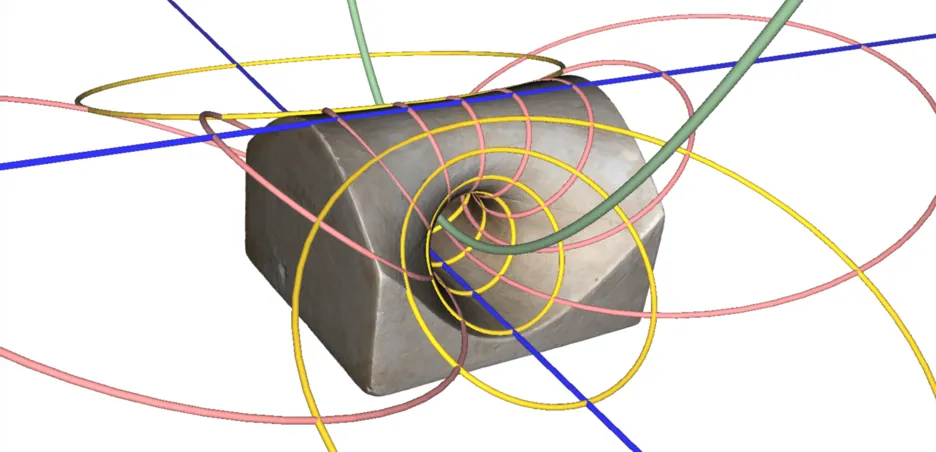
Chi conosce la geometria, può comprendere tutto in questo mondo. (Whoever understands geometry is able to understand everything in this world.) – Galileo Galilei
Geometry and topology play a central role both in applications as well as in fundamental mathematical research. Both study various aspects of shapes, spaces, and their relationships: When are two shapes the same or equivalent, and how can we express and quatify how similar two shapes are?
The two fields have a different perspective on this question. Geometry is mainly concerned with quantitative aspects. Geometric quantities, like length, angles, area, and volume play a central role. Topology focuses more on qualitative aspects: can one shape be deformed continuously into the other, regardless of size? Do two shapes have the same number of holes? Often there is a direct link between geometric and topological properties, and the interplay of methods from both fields can lead to striking insights. This is why these two fields are commonly seen as one.
Geometry
Geometry at our department covers a spectrum ranging from classical differential, projective, and incidence geometry to algebraic and combinatorial aspects of geometry.
These subfields allow research topics to be viewed holistically from different angles: purely geometric, algebraic and analytic, as well as discrete. The focus is on fundamental aspects of geometric structures as well as concrete applications that require a deep geometric understanding to analyze or visualize structures.
Topology
Our research in topology ranges from pure to applied, with a focus on topics like higher categories, topological field theory, and higher cobordism theory on the pure side, as well as topological data analysis, persistent homology, and discrete Morse theory on the applied side.
Higher structures have applications not only to mathematical physics, but also within topology, algebraic geometry, and representation theory, which is represented in the research areas of the group.
In applied topology, a major theme is the identification of connectivity in data sets at multiple geometric scales, with striking applications that are unaccessible to traditional methods of data analysis.